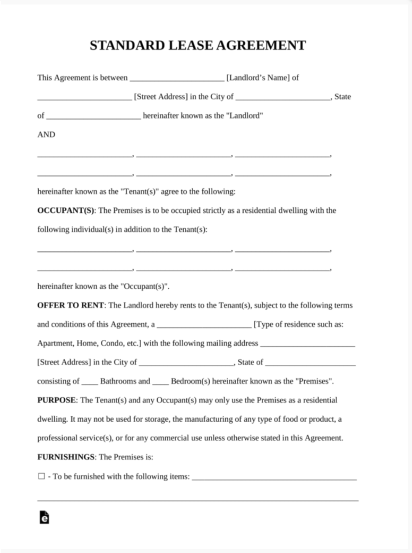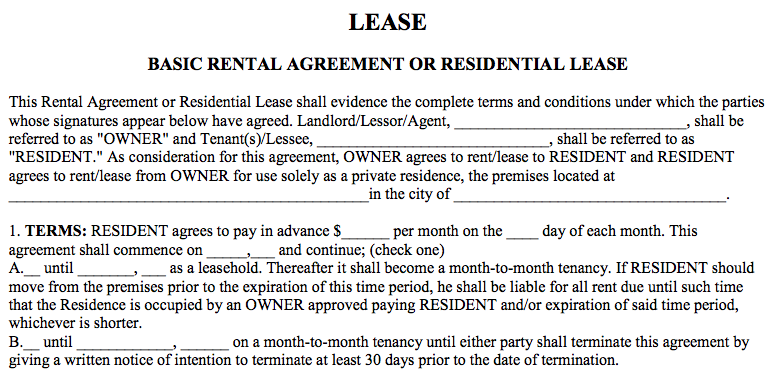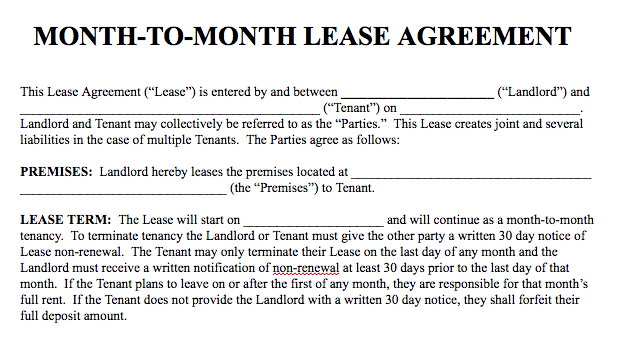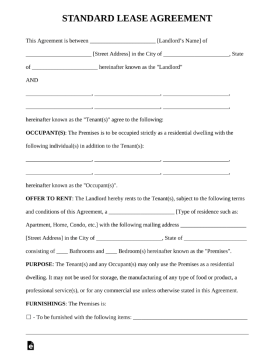Simple Rental Lease Agreement Template
If you are looking for a basic, standard or simple rental agreement in a Word document, there are many to choose from. Most states vary by rental law but all of them abide by the fair housing act. Below are a variety of basic rental agreements in Word you can use and update on your own.
As always, it is important to review your local renter / tenant laws with a local real estate attorney before giving any rental agreement to a potential tenant.
Download and edit a standard lease or a month to month agreement form for your specific state by clicking on the image below:
Basic Rental Agreement Word Document
Standard Rental Lease Agreement
Example Rental Agreement Three
Sample Month to Month Rental Agreements
Sample Month to Month Rental Agreement
Sample Month to Month Lease Agreement Two
If you are looking for more customizable rental lease agreements, you can use some of the below paid and free services that walk you through the rental agreement process.
- eForms
- LawDepot
- LegalZoom
- LegalTemplates
Residential Lease Agreement Terms
Some of the basic terms you should be aware of that are used in rental agreements are the following:
Lease Term – This is the length of the lease. Most long term lease arrangements are at least 1 year but some terms can be month to month. As a landlord, it is important to have any lease term end in a seasonally beneficial time period so if the tenant does not renew, you can find a replacement relatively quickly. The best month to have your lease renew is during the typical moving months of June, July and August. If you fail to renew the lease, most state rental laws say that the contract then goes month to month.
Security Deposit – This is the mount of deposit the landlord collects upfront before the renter moves in. The security deposit is usually 1 to 2 times the amount of the monthly rent and is returned to the tenant at the end of the lease term if nothing has been broken or damaged. Take a look at your local state laws as some states put a cap on the amount of security a landlord collect.
Pet Deposit – The pet deposit is what you collect for potential damages that might arise from a tenant having a pet within your rental. In some cases, it is better to use pet addendums but a common section within rental agreements all allow for separate pet deposits.
Utilities – Most long term rentals do not pay for all utilities for the tenant. Some basic utilities like trash and water may be included in the rent but other utilities like gas, electricity, internet and cable is usually the responsibility of the renter.
Late Charges – If a landlord elects, they can a penalty for renters who do not pay their rent on time. Some states have limits on the amount a landlord can charge on late fees.
Guests – This is the section that notes and describes the maximum amount of guests a renter can have on the property at anyone time. This is a good section to have to discourage parties and loud noise.
Sub-Letting – Most lease agreements do not allow sub-letting or subleasing. This is when the tenant rents out the property to someone else. With the popularity of sites like Airbnb, it is essential to have the right sub-letting language within your agreement.
Receipt of Agreement – The lease is not valid unless all parties involved have received a receipt and acknowledgment of the lease.
Property Description – This is the section that describes the location of the rental property including address, number of beds, baths, type, common areas, etc.
Termination – In most lease agreements, there is no termination clause. If there is, there is usually a termination fee or cost to the tenant. In most cases, the tenant would have to be responsible for paying the remaining rent due. For example, if there are 6 months left on the rent, the tenant is responsible for paying the remaining 6 months plus any other early termination fees.


























